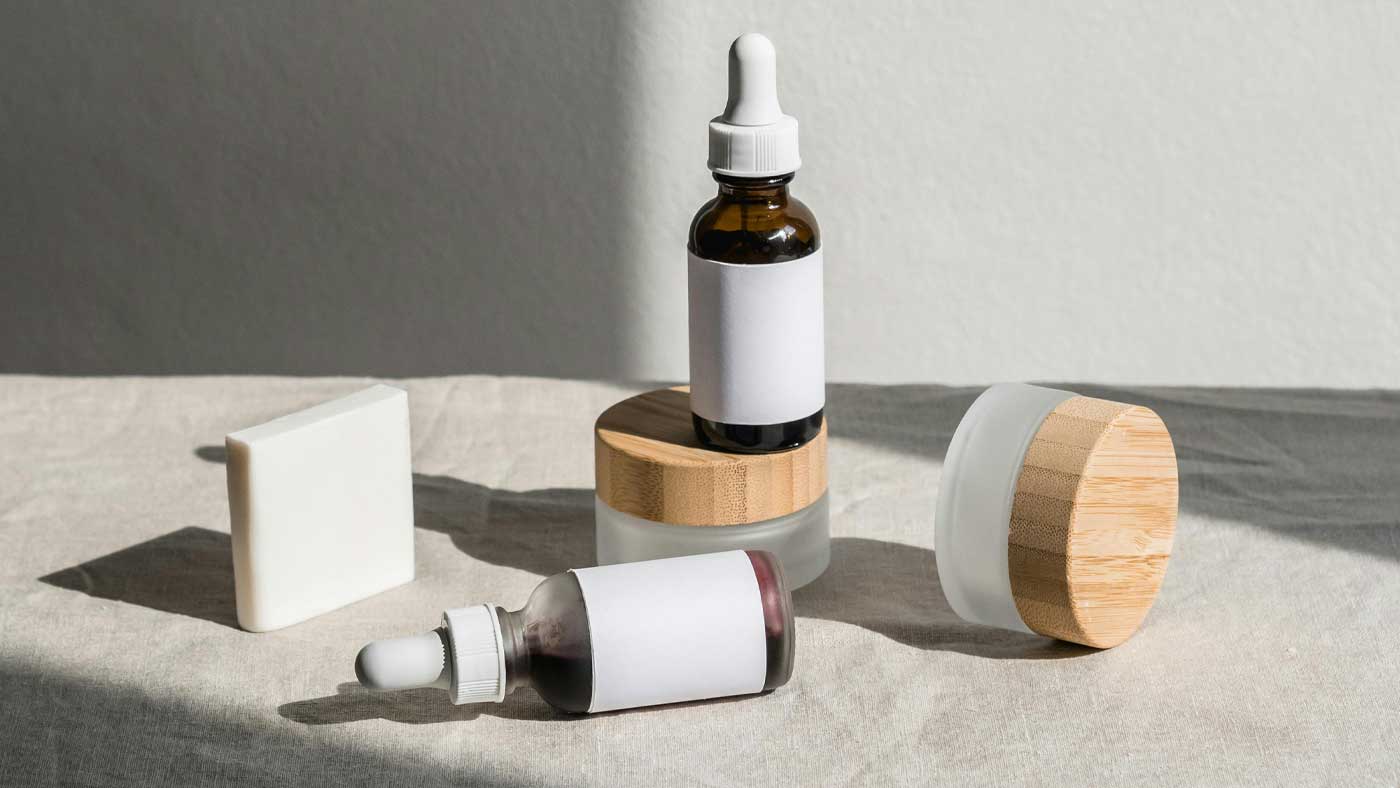Applying the fine print before the product. Our quick guide to decoding skincare labels, understanding ingredient order, and getting symbolic.
THE FIRST 6
Your skincare ingredients are listed from highest to lowest concentration with the first six making up the bulk of the formula and those that are sprinkled in listed last. This means if a really great ingredient is included at the bottom, there's a good chance it doesn't have a high enough concentration to make an impact.[1]
TRUTH SERUM
It’s not just what’s in a serum that matters but how much. For example, a brand can market that a product uses 100% pure vitamin c (meaning the raw ingredient is ‘pure’), even if the actual product overall includes less than 1% of that same ingredient. If it’s not the first thing on the ingredient list, it’s probably feeding you bs.[2]

PAO
A European standard, PAO stands for Period After Opening and tells you the amount of time a product will remain stable and safe after its first interaction with a consumer. PAO is focused on the potential risk of microbial contamination (i.e. digging your paws into a moisturizer and reusing it).[3]
A product’s PAO is strictly voluntary in the US and isn’t required by US law.
 |
EXPIRATION
Similar to food, this little hourglass symbol is your “best before” date and tells you the product has a life span of less than 30 months, whether it has been opened or not. Expiration dates are not required for cosmetics in the US, but are required for over-the-counter products like sunscreen or acne medication.
But if an over-the-counter product has passed three years of real time stability then it can also forgo an expiration date.
THE DIRT ON 30
EU regulation says if the shelf life is less than 30 months, an expiration date must be indicated on the packaging. If the shelf life is at least 30 months, no indication of expiration date is required on the packaging, but a PAO is mandatory.

REFER TO INSERT
This one’s pretty obvious. When brands can’t fit every bit of product information on a bottle, they will include this symbol, indicating more info can be found on an enclosed leaflet, card, or insert. This happens quite often with smaller cosmetics packages.

FINANCIAL CONTRIBUTION
Widely recognized in Europe, the “green dot” with two interlocking green arrows means that the manufacturers have made a financial contribution to recycling services in Europe. It doesn't mean the product itself is recyclable.[4]

CAPABLE OF BEING RECYCLED
Meet the Mobius Loop (yep, it has a name). Sometimes the symbol will include a percentage in the middle, signifying how much of it has been made from recycled materials. Or it will include letters below, detailing what particular resin was used in making the plastic and how easy or difficult it is to recycle. For example, PP (Polypropylene) is used in tupperware and is very hard to recycle. But still capable.


ORGANIC...ISH
If a product has the USDA Organic label, 100% of the ingredients must be organic (except for water and salt). If it has the Certified Organic label, 70% of the ingredients must be organic. However, neither label indicates a product is "pesticide-free" or "chemical-free.” In fact, under the laws of most states, organic farmers are allowed to use a wide variety of chemical sprays and powders on their crops.[5]

3 BUNNIES TO TRUST
IN THE KNOW
Keep these online databases close at hand on your quest for the good stuff.
INCI List — A universal classification system, INCI stands for International Nomenclature Cosmetic Ingredient. At the moment, there are more than 16,000 ingredients on the INCI list, which is the most comprehensive listing of ingredients used in cosmetic and personal care products. They also have a cool decoder for defining ingredients.
wINCI — The online version of the International Cosmetic Ingredient Dictionary & Handbook. This product provides the most comprehensive listing of ingredients used in cosmetic and personal care products.
EU CosIng — The EU's official database for cosmetic ingredients, including the latest list of banned/restricted cosmetic ingredients in the EU. It allows you to look up an ingredient's INCI name or CAS no.
EWG’s Skin Deep — A US activist group that specializes in research and advocacy, the Environmental Working Group (EWG) is a major player in pioneering chemical policy. You can search ingredients, products, and brands on their site.
HELPFUL WATCHDOGS
Social handles for peeps and brands paving the way (we will be regularly updating).
Words By: Holly Brown
Footnotes
- How to Read Cosmetic Labels. The Derm Review. October 2019. Source
- Judy Johnson. How to Read an INCI List for Sensitive Skin. Get the Gloss. July 2017. Source
- Lisa Niven-Phillips. A Guide To What Those Symbols On Your Beauty Packaging Really Mean. Vogue UK. November 2018. Source
- Lottie Winter. A Simple Guide to All the Recycling Symbols on the Back of Your Products. Glamour UK. March 2021. Source
- Shelby Wilson. Organic Assumptions. Medium. October 2018. Source
- Suzi Scheler. Can the Real Bunny Come Forward. Sustainable Shopper. August 2015. Source


